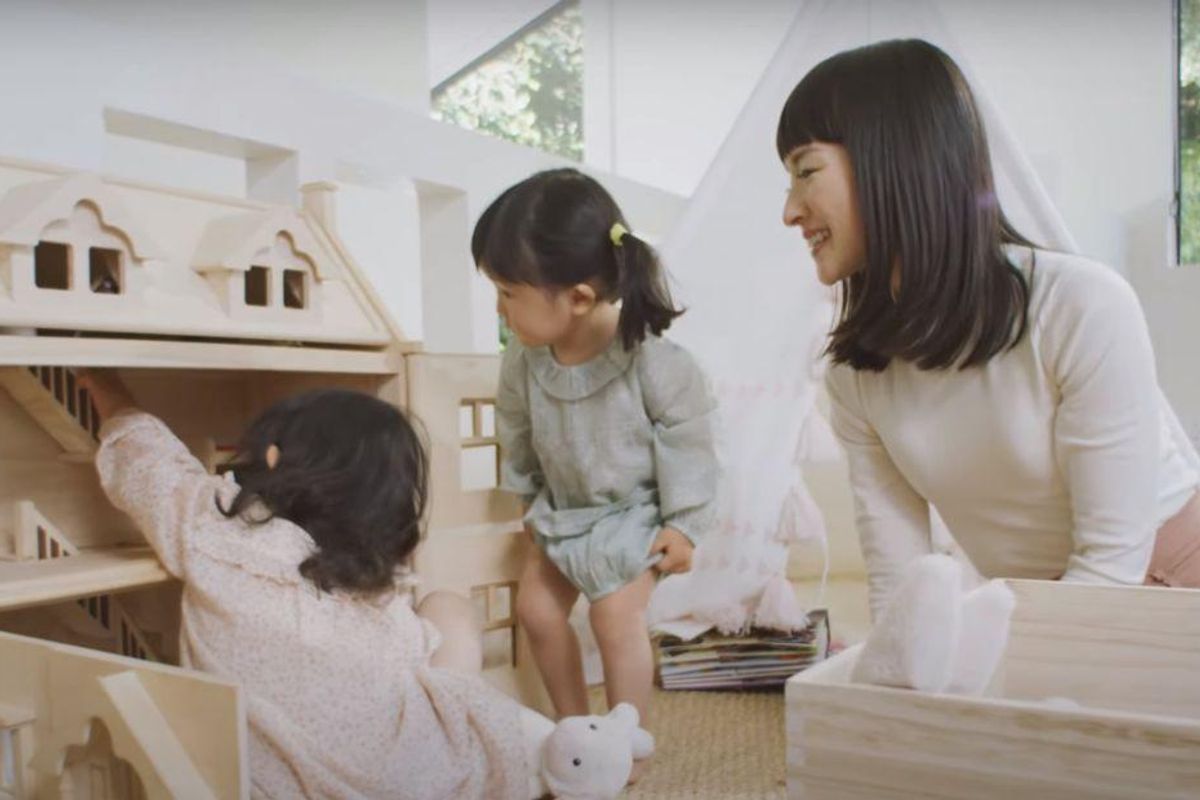Professional tidier Marie Kondo says she's 'kind of given up' after having three kids
Hearing Kondo say, 'My home is messy,' is sparking joy for moms everywhere.

Marie Kondo playing with her daughters.
Marie Kondo's book, "The Life-Changing Art of Tidying Up," has repeatedly made huge waves around the world since it came out in 2010. From eliminating anything that didn't "spark joy" from your house to folding clothes into tiny rectangles and storing them vertically, the KonMari method of maintaining an organized home hit the mark for millions of people. The success of her book even led to two Netflix series.
It also sparked backlash from parents who insisted that keeping a tidy home with children was not so simple. It's one thing to get rid of an old sweater that no longer brings you joy. It's entirely another to toss an old, empty cereal box that sparks zero joy for you, but that your 2-year-old is inexplicably attached to.
To be fair, Kondo never forced her way into anyone's home and made them organize it her way. But also to be fair, she didn't have kids when she wrote her best-selling book on keeping a tidy home. The reality is that keeping a home organized and tidy with children living in it is a whole other ballgame, as Kondo has discovered now that she has three kids of her own.
"My home is messy," she admitted in a recent webinar, according to The Washington Post, "but the way I am spending my time is the right way for me at this time at this stage of my life.”
Despite the Schadenfreude many parents may feel at Kondo's confession that kids change things, her reasoning for letting things go is actually right in line with her philosophy of embracing joy.
“Up until now, I was a professional tidier, so I did my best to keep my home tidy at all times,” she said. “I have kind of given up on that in a good way for me. Now I realize what is important to me is enjoying spending time with my children at home.”
Kondo has offered tips for tidying with kids at home since she became a mom, and they're pretty solid. But as any parent can attest, some children are naturally neater than others, and how many kids you have makes a big difference as well.
Kondo gave birth to her third child in 2021, so she's currently in the adorable hell that is toddlerland. Research has also found that parents of three kids are the most stressed, so if Kondo has found a way to enjoy time with her kids and create more balance in her life by letting go of her tidiness standards, more power to her.
Her new book, "Marie Kondo’s Kurashi at Home: How to Organize Your Space and Achieve Your Ideal Life," focuses on designing your living space so it works for you. "Kurashi" loosely translates to "way of life" or "the ideal way of spending our time," and Kondo says it's about seeing the world through the lens of what matters most.
“I believe that when we consciously cherish something precious, we deepen our relationship with it,” she shares on her website. “This, in turn, deepens our bonds with other things in our lives, bringing out the best in them and in ourselves.”
Applying that philosophy to family, Kondo's "giving up" on tidying all the time makes perfect sense. If spending quality time with your children sparks more joy than keeping your belongings organized just so, then that's what you should do.
Kudos to Kondo for publicly acknowledging that having kids has altered how her home looks and for validating what so many parents have felt in the face of unrealistic expectations of tidiness. She could have kept up a front of always being on top of organization and having a perpetually tidy home, but she didn't. Here's to her willingness to share the reality, here's to embracing joy in the fleeting time we have with our children, and here's to letting go of the rules that might interfere with that, even if it means humbly admitting defeat in the face of our kids' messes.

